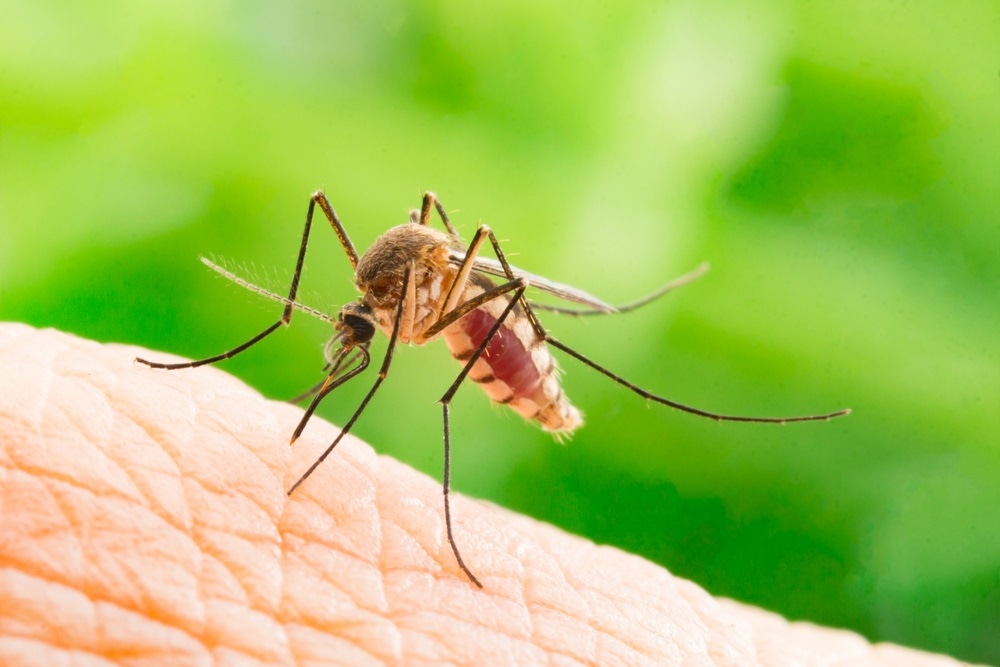Public health officials from the National Institute of Allergy and Infectious Diseases (NIAID) have declared that the mosquito-borne eastern equine encephalitis (EEE) virus is an "emergent threat," with 2019 proving to be a particularly deadly year for the disease in the United States.
 Image Credit: frank60 / Shutterstock.com
Image Credit: frank60 / Shutterstock.com
An unusually high number of EEE cases have been identified this year, with 36 confirmed across eight states since November 12th. In 14 cases, the disease was fatal.
"It's interesting, because something like between 1831 and 1959, there were around 13 total cases documented. But, for the first time this year, there's at least 36,”
Anthony Fauci, NIAID Director
No vaccines or treatments are available
Although cases of EEE are rare, the virus can attack the brain in those who do become infected and cause death. Currently, there no vaccines or treatments available, although many compounds are being investigated.
According to the NIAID, the virus is primarily spread by the Culiseta melanura mosquito, some tree-perching birds found in forested wetlands, but it can also circulate in small mammals, reptiles or amphibians. Occasionally, other species of mosquito transmit the virus to humans and other mammals.
Efforts to tackle vector-borne diseases are needed
Now, in a perspective piece recently published in the New England Journal of Medicine, NIAID officials, including Fauci, have cataloged the threat of the growing spread of EEE and other vector-borne diseases.
The experts have described the eastern equine encephalitis virus (EEEV) that causes EEE, the current research efforts to address EEE, and the need for a national strategy to tackle the spread of EEEV and other viruses that are spread by mosquitoes and ticks.
Symptoms and death rate
In cases of human infection, most people (96%) do not develop symptoms, but among those who do, the death rate is “really high,” says Fauci, killing around one-third and leaving many with permanent and severe neurological damage.
Scientists have not yet found out why EEEV manages to cross the blood-brain barrier and cause damage only in some people, Fauci adds.
When EEEV does start to cause symptoms, it does so between 3 and 10 days after infection. Initially, symptoms include fever, nausea, vomiting, headache, and muscle ache. Neurologic symptoms, which can develop within five days of infection, are initially nonspecific but progress rapidly.
Since EEEV is difficult to isolate from samples, diagnostic techniques may not detect it, with testing for EEEV antibodies returning a negative result. The health officials say that although no point-of-care diagnostics for EEE and other vector-borne causes of encephalitis are available, at the moment, they would be of little value due to the lack of safe and effective treatments.
How are patients managed currently?
Currently, infected patients are managed with supportive care, which frequently involves intensive care in a hospital and ventilatory support.
The authors emphasize that people with the virus are not infectious, but it is vital that both patients and their families are provided with social support and counseling, given how dangerous the disease can be.
Many compounds are being assessed
To date, no antiviral drugs have proved to be effective, but many compounds are being researched.
Monoclonal antibodies had proved effective in an animal model, but only when they were administered prior to infection.
Several candidate vaccines are in the development pipeline, but Fauci and colleagues say they may have trouble reaching advanced development and licensure.
“There may not be strong incentives to proceed to advanced development and licensure because of the nature of the disease: outbreaks are rare, brief, and focal, and they occur sporadically in unpredictable locations, making it difficult to identify an appropriate target population for vaccination,” writes the team.
However, efforts to develop mosquito-saliva vaccines that would be effective against various mosquito-borne diseases are in the early stages of development, say the authors: “A theoretical advantage of such vaccines is the inclusion of various salivary proteins from selected mosquitoes that transmit multiple arboviruses that infect humans.”
The spike in cases through 2019 exposed a lack of adequate preparation
Given the absence of effective vaccines and treatments, health departments could provide early warning of potential human infection by monitoring mosquitoes and birds, but the authors say such efforts have not been backed by sufficient funding.
Although outbreaks of EEE have so far been infrequent and focal, the surge in cases throughout 2019 exposed the lack of adequate preparation for emergent disease threats, says the team.
American public health experts have now called for a national defense strategy to protect against arboviruses and other vector-borne diseases, a move that Fauci and colleagues strongly agree with.
They say an additional concern is the effects of climate and weather, such as how changes in heat and rainfall will impact on the life cycles and geographic distribution of arthropod vectors and viral transmission patterns.
“Given the near certainty of future emergences, arboviruses constitute a real and present danger,” the authors write.
“Though the best way to respond to these threats is not entirely clear, to ignore them completely and do nothing would be irresponsible,” they conclude.